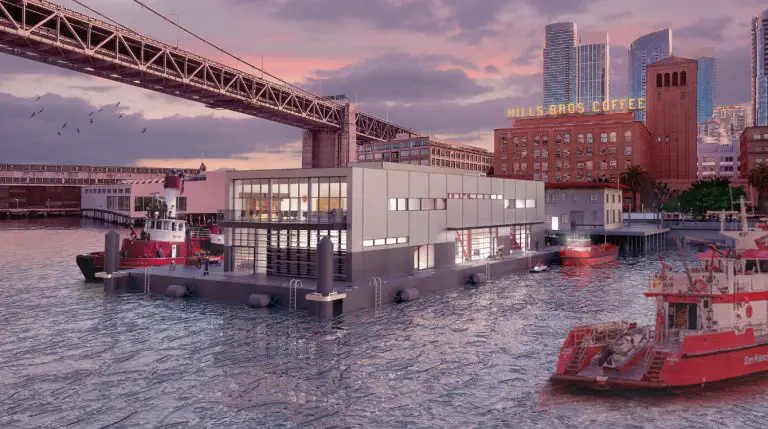Fire Station 35, the world’s first floating fire station has been completed construction on Pier 22.5 in San Francisco. The facility was put into place in response to San Francisco’s need for updated marine and fire safety on the Bay and was hence built on a float. To reduce avoid disruption and public impact along the busy Embarcadero area, the float and other marine components were delivered to nearby, and less-occupied, Treasure Island where building construction of the 14,900-square-foot structure took place and when construction was completed, it was pushed across the Bay to the Pier on a night when the winds and traffic were low.
Also Read: US$750 million arranged for Burlingame Point Office Block, San Francisco
Constructing the floating fire station on top of a float solved some critical future scenarios such as the risk of a major earthquake that could greatly destabilize the water levels or climate change. Being permanently moored to four steel piles, the fire station will seamlessly adjust to sea-level rise and will rise and fall with the tides. The design of the steel float and its independence from land ensure its ability to withstand a major earthquake and continue to function as a maritime command center. There is mooring for four boats to be held onto the facility along with a driveway onto the float provides access for ambulances and other emergency vehicles.
“I am certain that the new Fireboat Station 35 will become the pride and joy of the people of San Francisco. It is not only an architecturally pleasing structure, but it is an engineering marvel designed in response to looming climate impacts.” said the Project Manager for City and County of San Francisco Public Works, Magdalena Ryor. “The biggest engineering challenge was the dichotomy of design criteria. The float needed to be robust enough to support a two-story building, last 50-years with no need for dry dock and remain functional after an earthquake. All this while providing a minimal movement experience for the firefighters living onboard.” added Erik Soderberg.
85%
